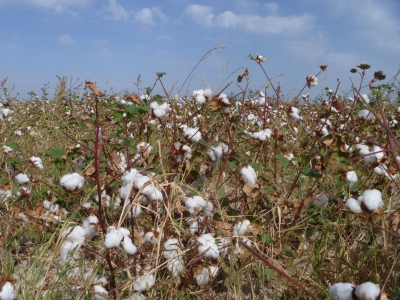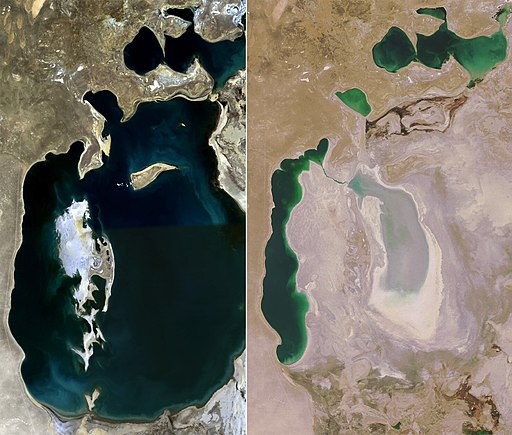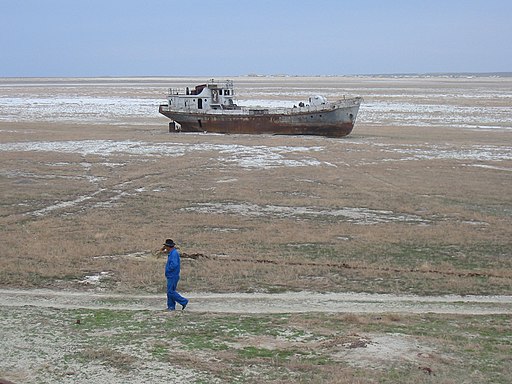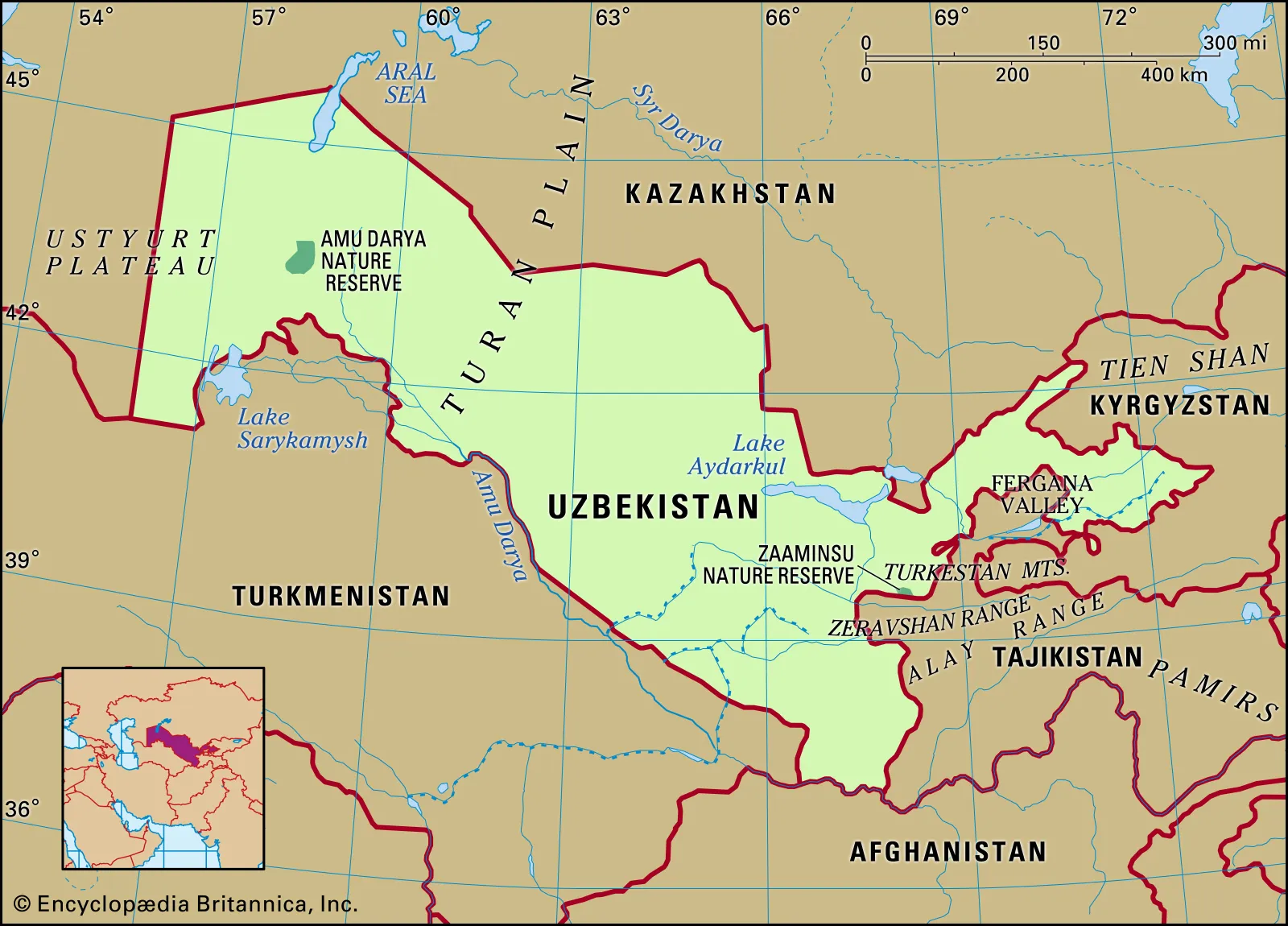When people think of environmental disasters, Uzbekistan probably doesn’t come to the top of mind. This is yet another aspect of Central Asian invisibility. Actually, Uzbekistan is a testament to some of the worst environmental disasters of the 20th century. And of course it’s almost entirely the fault of Moscow’s leadership during the many decades of the USSR. I must admit, it gives me a bit of smug-bastard satisfaction that this is such an obvious counterexample to the “all environmental problems are inherently rooted in capitalism” crowd.
The main problem is water, the main culprit, cotton. Cotton is a very thirsty crop (source):
| Product | Litres needed for 1kg |
| Cabbage, beer, pumpkin | 230-350 |
| Corn, wheat, rice | 1200-2500 |
| Chicken, pork | 4300-6000 |
| Cotton fabric | 10000 |
| Mutton, beef | 10000-15000 |
| Chocolate, coffee | 17000-19000 |
Meat is known for being water-intensive, yet cotton beats even several kinds of meat. Plus, meat is not nearly as bad when the animals are grazed (as opposed to feed lots) which is the main way of raising meat in Central Asia. Basically, is it smart to grow cotton as the main crop in a largely desert country? No, it really isn’t. And yet cotton monoculture made Uzbekistan one of the world’s largest producers. The immense scale was imposed by the Soviets to make different republics specialise in different things, as opposed to having a mix of industries in each republic. Makes more sense in a union but when the union no longer holds, each republic is stuck with huge investment into a few industries and little else. Meaning that it’s very hard for Uzbekistan to move away from cotton. It’s not going away.

The main problem is that cotton was irrigated from the main rivers. As production increased, the rivers started to dry up. While in Uzbekistan I heard people say that it’s better managed now that they’re not controlled by Moscow. And it may be true, but the infrastructure that was inherited was shit. This seems to have been planned by idealistic Soviet technocrats with a belief in the unbridled, inevitable progress of humanity as New Soviet Man will use science and technology to conquer nature and solve the problems of the international proletariat. (Again, it’s not all about profiteering and capitalism.)
The end result is the drying up of the Aral Sea — one of the greatest environmental disasters in the world. It does not get much coverage but it’s hard to overstate its negative effects. The problems it caused to the water management of Uzbekistan and the damage to the fishing industry are the more obvious effects. It has changed the microclimate, with more extreme summers and winters (already extreme in Central Asia) and creating salt-infused dust storms. It has joined an island with a secret bio-weapons testing facility to the mainland.

Most importantly, it’s a public health disaster, exposing huge former seabeds with toxic chemicals, fertilizer runoff, pesticides and industrial waste. The residents near the Aral Sea suffer from an enormous spike in tuberculosis, cancers, digestive tract orders, high infant mortality. This is well-described in the excellent book Chasing the Sea. On the Kazakhstan side, attempts at restoring the sea have made some progress, but on the Uzbekistan side it’s looking bleak.

I did not visit the Aral Sea (next time), but we did stop at Aydar Lake. This is another testament to water mismanagement. This is an artificial lake, 15km wide and a formidable 250km long. By artificial, I don’t mean planned — it’s the result of another Soviet mishap. The Soviets dammed Syr Darya (one of the rivers that still feeds into the Aral Sea). In 1969-70, there was so much rainfall that all the dams overflowed and 60% of the river’s annual flow spilled out into the surrounding lowlands. Luckily it was a salty desert wasteland with very few people. The lake remains to this day, with low salinity and a fishing industry having grown up around it. However, it’s all based on more mismanagement.
The last aspect to water management is one I saw myself. In the main cities, they seem to use water like they’re not a doubly-landlocked country with huge water problems. Lawns in the centre of town are often waterlogged. The image below is the centre of Tashkent, where I almost had to flee from the flood-level-intensity sprinklers that turned on at around 3pm — the hottest part of the day incidentally. The pomp of looking official and “proper” has its price.





0 Comments